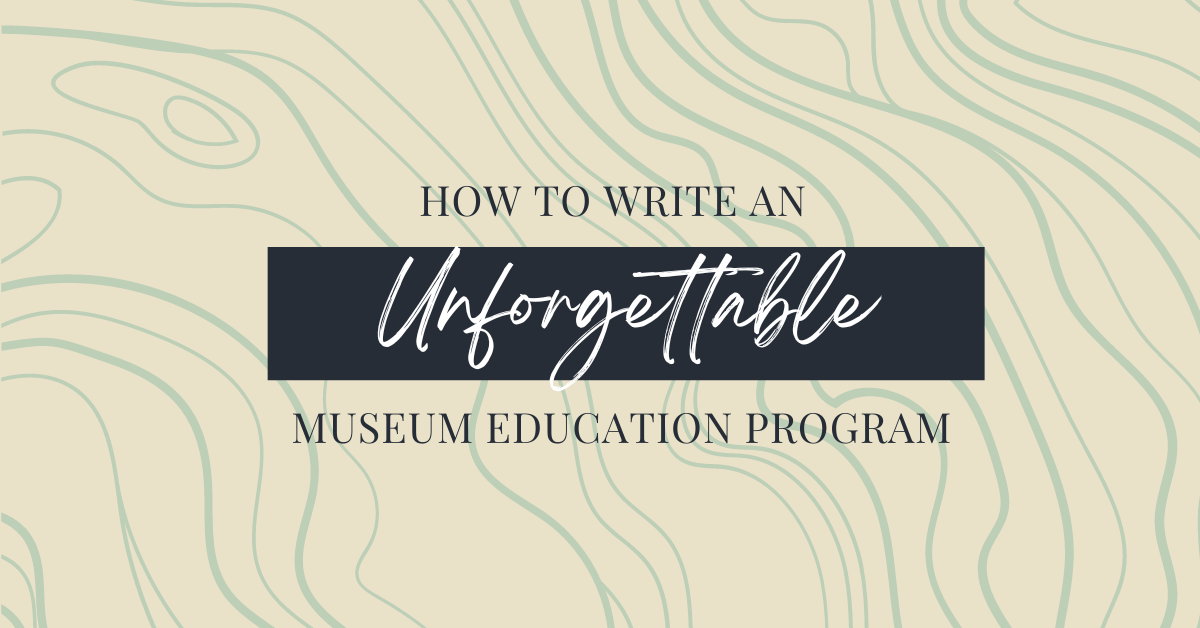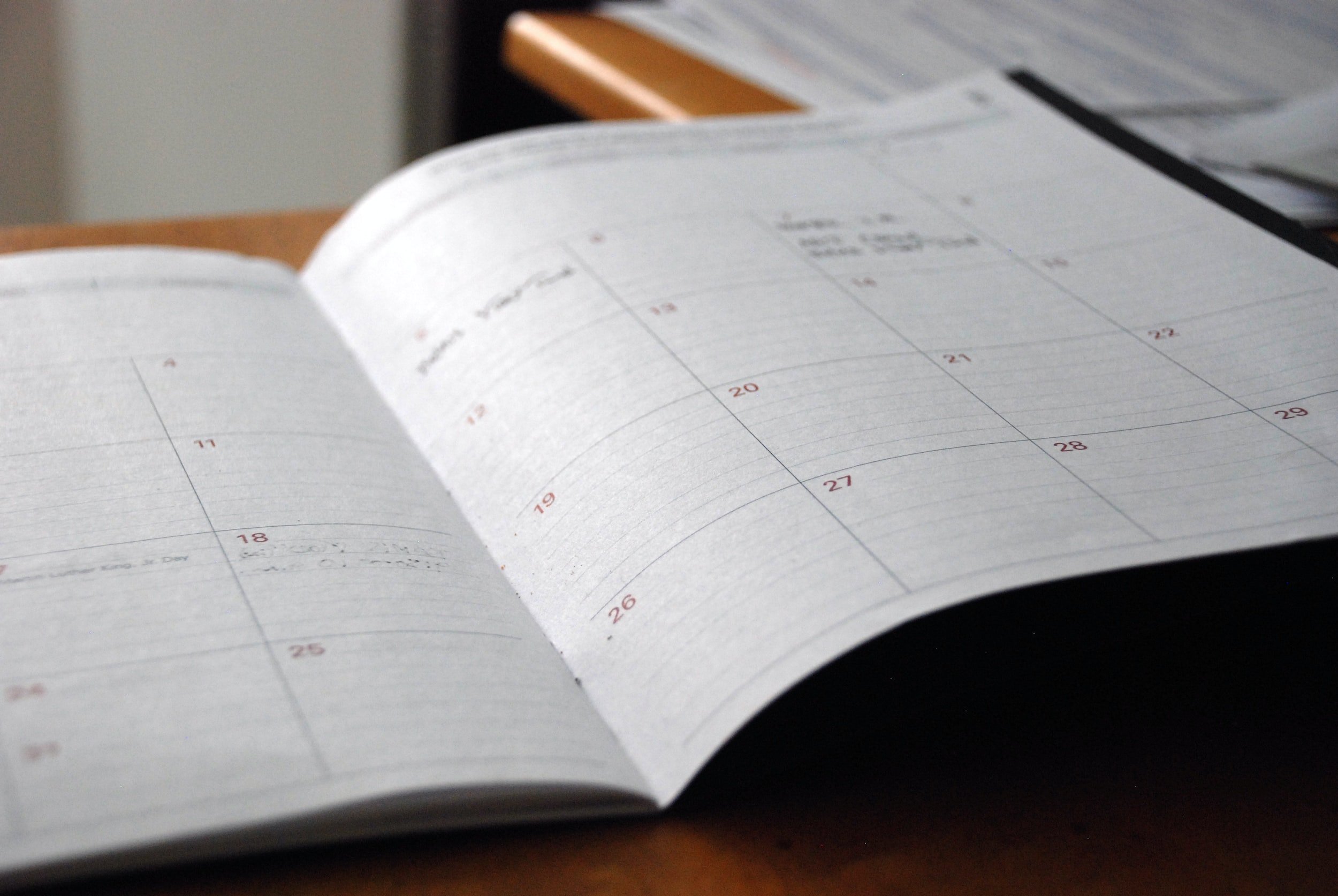How to Write an Unforgettable Museum Education Program
I attended the Tennessee Association of Museums conference last month, and I heard something that echoed what I heard on a call sponsored by the Southeastern Museums Conference program committee a few months ago: there are a number of emerging museum educators who don’t have any idea how to create a program. They are asking veterans questions like “where do you start?” and “what are the exact steps?”
This isn’t really surprising, because there are very few graduate programs that focus exclusively on museum education; in most university programs, museum education is merely a component of a fuller look at museology. In addition, the impact of the pandemic complicated staffing in museums. According to a study by AAM and Wilkening Consulting, over 60% of museums furloughed or laid off their staff; while most museums have since been able to retain those lost positions, it doesn’t mean the experienced workers came back after their museums reopened. On the contrary, many museums continue to struggle to fill open positions. In the case of the institution where I worked at the time, in our education department, we lost three full-time educators, who collectively had 15 years of experience. When we were finally able to rehire, we could not hire back at the same level - yes, we refilled three full-time educator positions, but they were three entry-level positions.
The collective effect is that a growing number of emerging professionals do not have the benefit of mentorship in their institution and feel a little lost as to how to begin.
I totally get that. For my part, I learned the real ins and outs of program development on the job, both from a mentor who had a few years of experience on me and through my own “boots on the ground” experience. Even still, when my mentor moved on and I assumed the director role, I found myself questioning everything.
I remember sitting at my desk just staring at the wall, feeling utterly unprepared, despite having nearly a decade of experience at that time. I knew exactly how to facilitate a program, but planning one? I got stuck wondering things like, “how do I write a blurb for this program?” or “how do I know for sure if this activity is effective?”.
When you’re unsure what to do, it’s hard to move forward.
The good news is, planning a program isn’t rocket science. But it helps to have a roadmap, which is why I’m starting a new series on the blog, all focused on planning and designing your perfect program.
In this post, I’ll define what a successful museum program is and give an overview of the 4 key components you’ll need to create an unforgettable visitor experience.
What is a Museum Education Program?
In “museum speak,” a program is a planned series of activities that visitors participate in. The activities are most often directly related to the museum’s collection or interpretive themes, but that is not always the case. There are a number of program types, such as
public (or community) programs, which are usually defined as events for the general public and are often non-age specific;
family programs, which are designed for families, usually with children under 18;
student programs, which are specifically geared toward schools, homeschool students, or other groups of similarly-aged children (like scouts) and typically have a very specific learning outcome; and,
adult programs, which are targeted at the 21+ crowd.
Museum programs differ from museum events, in that programs are normally associated with learning objectives, whereas events are typically more social in nature (think fundraising goals). Museum programs are also distinct from regular exhibits (or tours, if your site is a tour-based, rather than gallery-based experience), in that programs are facilitated for a particular group of visitors and are planned in advance. Obviously, a regular tour or an exhibit does have learning objectives and must consider many of the same components discussed here; what differentiates a “program” is that it is in some way special or unusual. Even if, like a field trip, it is often repeated, a program is set apart by its particular audience, its timing, and/or its subject matter.
Truthfully, at the end of the day, the distinction between programs, regular exhibits, and events mostly comes down to semantics, but it is important to recognize what most museum professionals mean when they say “education program.”
What Does the Perfect Museum Education Program Look Like?
According to AAM, 97% of Americans believe that museums are educational assets for their communities. However, according to recent research by Dr. John Falk, people do more at a museum than just learn. His 2022 book, The Value of Museums, demonstrates all of the ways people engage with a museum; indeed, his study showed that “something deeper, more fundamental than learning was happening.”
In other words: American visitors expect to be educated at your institution, but when it actually comes down to their visit, they are impacted by more than your text panels, spoken words, artifacts, or activities.
What this means to you, the museum educator, is that the perfect program is a combination of what you want visitors to learn, what you want visitors to do, what visitors want to learn, and what visitors want to do. Essentially, at the end of the visit, you have very little control over what a person experiences on your site; however, you can set them up for success with careful planning.
The key components you should consider when planning a successful museum education program are the reason, the theme, the logistics, and the marketing. We’ll get a bird’s eye view of each component now, and then over the next several weeks, I’ll be unpacking each element of each component in more detail. Make sure you’re subscribed to my weekly email so you don’t miss out on how you can get started planning the perfect museum program for your visitors.
Key Component #1 - The Reason
You must have a good reason for wanting to begin a new museum education program. But, the reason can vary: perhaps you have a new exhibit coming in, or you’re looking to increase engagement among a particular demographic. Reasons can even be financial in nature. Regardless of what your reason is, it should clearly express the impact you intend this program to make.
This is a crucial component because the reason behind your program informs your choices regarding audience focus and learning/experience objectives.
Key Component #2 - The Theme
The theme of your program is the broad concept you want visitors to walk away understanding. Themes are not lists of facts, but rather they are the holistic ideas that hold the facts together.
If you’ve spent hours developing interactives for your program, but something still feels off – like your message just isn’t landing, this is likely the missing piece. Without this, you can lead dozens and dozens of programs and still not make a lasting impact.
Once you’ve uncovered your theme, the narrative structure of your program will become clear. Clarifying your theme also ensures that your interpretive process and narrative are ethical and sensitive.
Key Component #3 -The Logistics
The logistics of a program are the nitty-gritty details of what will happen and when.
When you start to finalize logistics, your program will really start to take shape. Of course, this step can become overwhelming, as you will be making lots of decisions that affect other departments, your staff, and your bottom line. When faced with logistical hurdles, you may start to dial down your grand plans. This is where my favorite brainstorming tool comes into play: blue-sky thinking.
Blue-sky thinking is a brainstorming mindset, where you allow yourself to only be limited by the height of your imagination, and it helps you decide what part of your plan is expendable and where you want to double down. Blue-sky thinking is so impactful, I’ll be fully explaining it in a future post.
The logistics you should consider when making your program plans include activities, staffing, schedules, use of spaces, and budget.
Key Component #4 - The Marketing
With a good marketing plan, all of your efforts will be wasted. If people are unaware of your amazing program, they are unlikely to attend. But most educators are not marketers. I’m certainly not; it took me YEARS to figure out the best way to spread the word about our programs. Maybe your institution has a fantastic marketing department. If so, count yourself lucky. Most small (and even mid-size) institutions don’t have full-time marketers. If marketing is yet another hat you wear at your museum, don’t worry - we’ll walk through it a step at a time.
Marketing considerations to understand include writing a blurb, creating graphics, and how to get marketing photos to use. You should also know the right marketing channels to reach your target audience.
Putting it All Together for Your Perfect Museum Education Program
The best course of action for any museum educator to take is to plan programs at least four months in advance of when you plan to launch them. This extended timeline gives you plenty of time to get all of your ducks in a row, and not feel rushed.
However, I know that in the museum world, it can be hard to prioritize planning a program that is scheduled for months from now, because you’ve got an already written program to do today, tomorrow, and next Tuesday.
That’s why we’re going to walk through each component, one step at a time, together, over the next twelve posts. Each post will dive into just one element of each program component, and give you one easy step to do each time.
If you can carve out 1 hour each week, I promise we’ll have your program planned and ready to launch before the next season begins!
What’s next? Download The Program Planning Checklist
If you need help getting started, my Program Planning Checklist will list out all 12 elements involved in planning the perfect museum education program for you.
As this series progresses, I’ll create more worksheets and checklists to walk you through each element in detail. If you’re on my email list, you’ll get immediate access to those worksheets as they are created!






